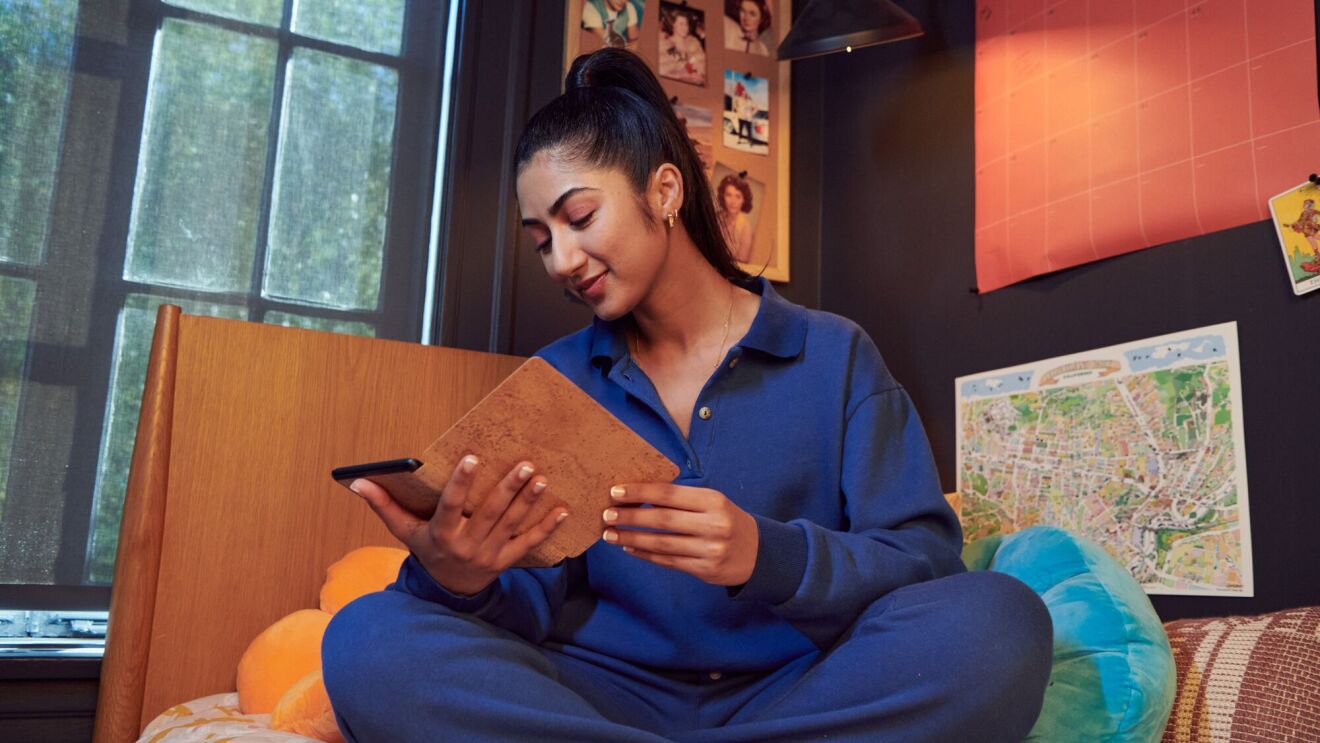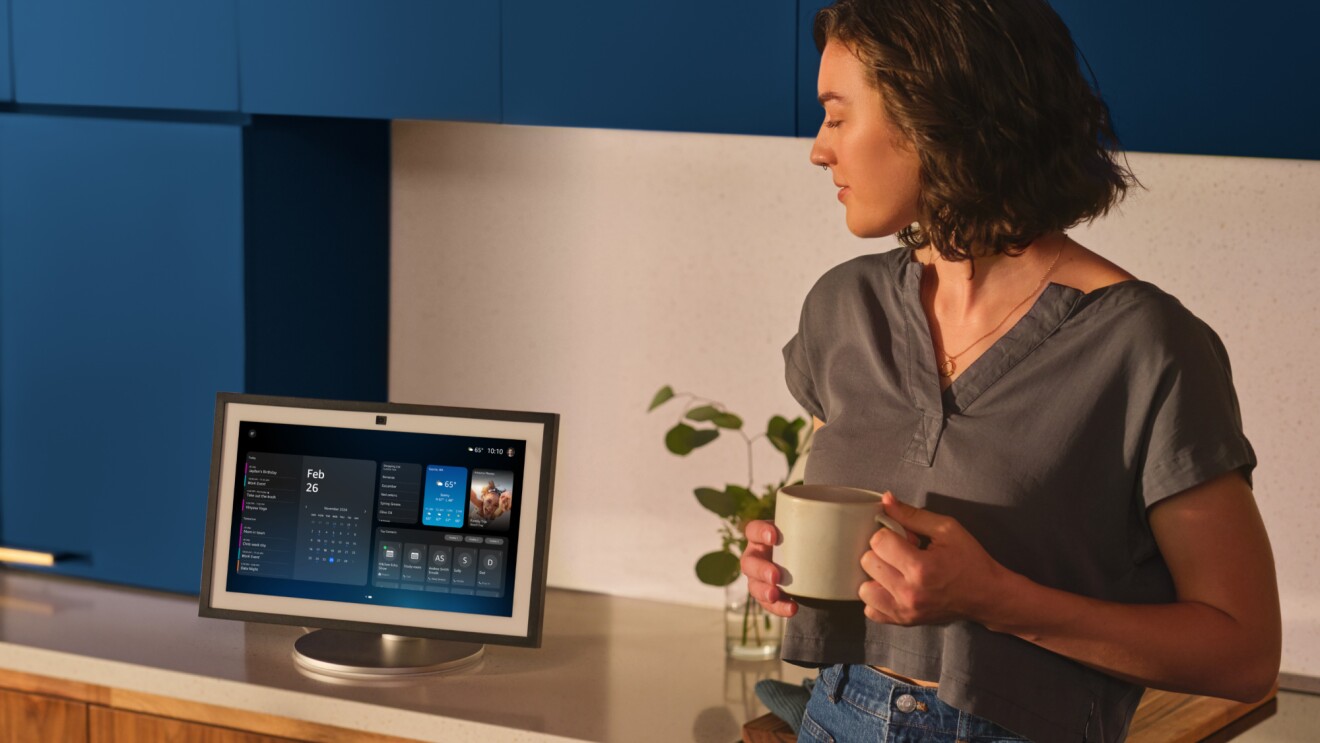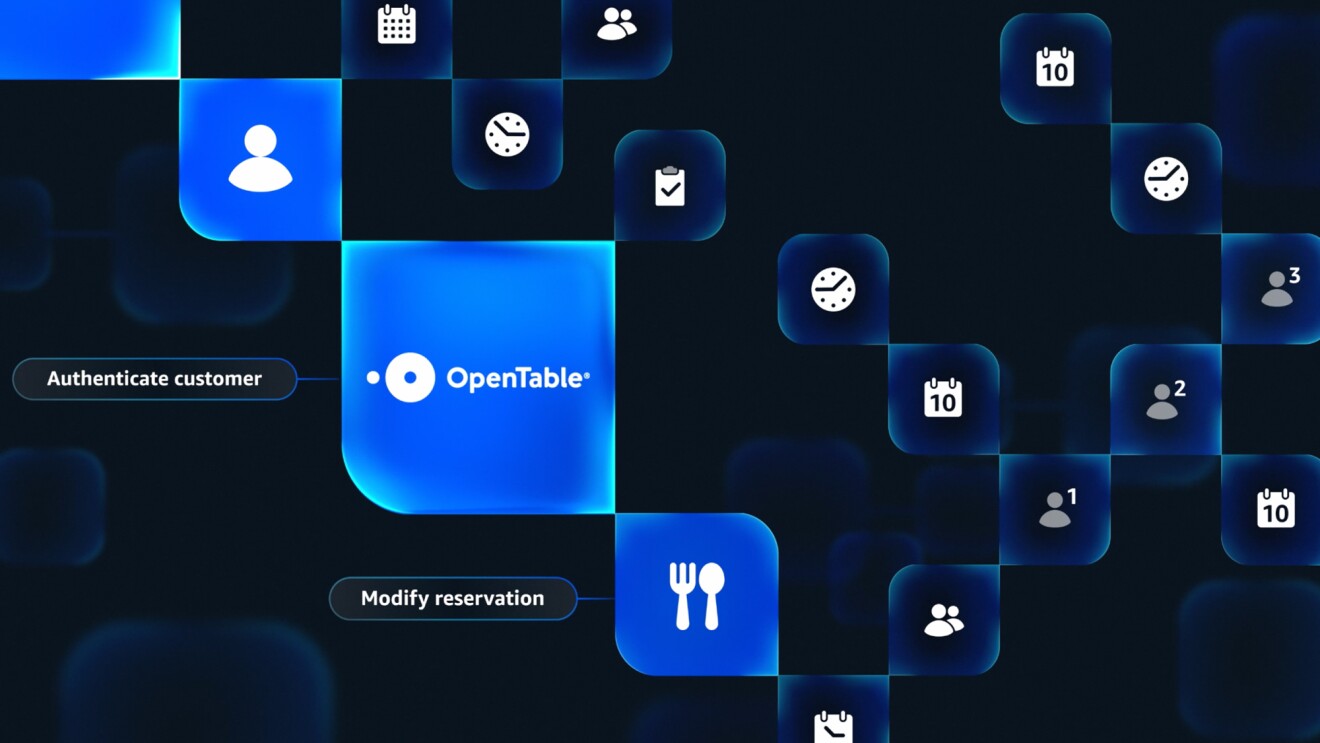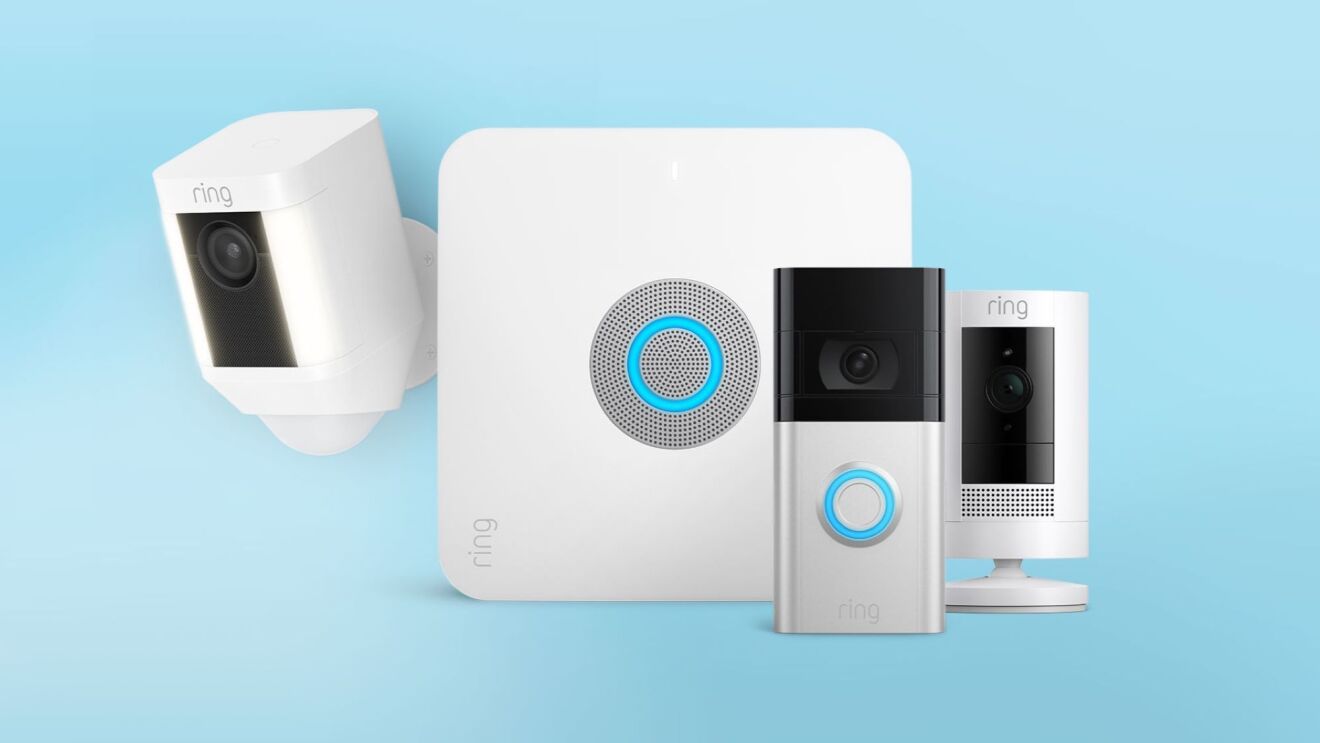As 2019 comes to a close, we’re looking back at how Alexa continued to get smarter and improve customers’ lives this year. 2019 was perhaps our busiest yet with the introduction of new languages like Hindi and Portuguese, tens of thousands of new skills, tens of thousands of Alexa-compatible products, and new devices that took Alexa on-the-go including Echo Loop, Echo Frames, Echo Buds, and more. We’re humbled that tens of millions of customers now use Alexa each month, hundreds of thousands of developers are building for and with Alexa, and hundreds of products have Alexa built-in. Let’s take a look at some of the things Alexa learned this year:
Alexa added even more features to help while you’re on-the-go.
- Alexa can remind you of things based on your location—for example to get milk when you’re at your favorite grocery store. Soon, we’ll make it possible to ask Alexa if specific foods are in stock at certain Whole Foods and where in the store to find each item.
- Auto makers like Audi, BMW, Lexus, and Toyota introduced new Alexa-enabled vehicles, and others announced plans to bring Alexa to upcoming vehicle models: Alexa will be coming to millions of new and existing GM vehicles in the coming months, as well as the all-new Volkswagen Golf.
- We launched version 2.0 of the Alexa Auto Software Development Kit (SDK), so that automakers can enable access to key Alexa features and capabilities, even when Internet connectivity is limited or nonexistent.
- We released Echo Auto broadly, and brands like Garmin, iOttie, and Nextbase introduced other new aftermarket auto accessories with Alexa built-in.
- Developers are customizing their skills for the in-car environment—there are new in-vehicle skills for Alexa from Parkwhiz, Drivetime.fm, Urgent.ly, and more.
Alexa added more features the whole family can enjoy.
- We expanded FreeTime on Alexa to include support for the Echo Show family of devices, so kids can watch age-appropriate videos, take photos and add fun stickers, sing-along with on-screen lyrics from Amazon Music, video call approved family and friends, or drop in on other Echo devices in their household. With FreeTime on Alexa, parents have the ability to set bedtime limits, block explicit songs, and more.
- The number of premium skills available in FreeTime Unlimited nearly doubled this year, with new skills like Ghostbusters, American Girl, Disney Princess, Star Wars Journeys, and more bringing even more fun and educational experiences for kids.
- Curated daily Flash Briefings designed for kids from brands like National Geographic and a collection of family-friendly podcasts including Wow in the World and Story Pirates offer more ways for kids to learn about the world around them.
- We launched a new category of Alexa Skill Blueprints for families and kids—“FreeTime Recommended”—so families can customize their Alexa experience by filling in the blanks in our easy-to-use templates including a variety of stories such as “Moon Landing” and “The Sea Princess,” and games like “Sorting Game Expert” and “Kids Fortune Teller.”
- Alexa can help both parents and students stay on top of school work with the new Alexa education skills from education technology companies like Kickboard, Coursera, BlackBoard, Canvas, and ParentSquare. Parents can ask things like, “Alexa, what assignments do the kids have coming up?” High school and college students can ask things like “Alexa, what do I have coming up in History 101?”
Alexa became more entertaining.
- We added our first celebrity voice, legendary actor and producer Samuel L. Jackson. Now you can ask Sam to tell you jokes, the weather, set timers and alarms, play music, and more—all with a bit of his own personality—in either the explicit or non-explicit version.
- Disney+ and the Apple TV app came to Fire TV, enabling customers to ask Alexa to play or find their favorite content using their Fire TV Cube, Alexa Voice Remote, or paired Echo device.
- Alexa has even more content you love with music from Spotify Free, Apple Music in 11 new countries, and HD audio from music services like Amazon Music HD, as well as podcasts from Spotify and Apple Podcasts.
- You can listen to your music with Alexa even when you aren’t at home. With permission, you can use your Voice Profile to log into your Alexa account from any Echo device—even ones you don’t own—and play your music or preferred news. If you’re at your friend’s house and want to access your own content, simply say, “Alexa, connect my account,” to log in and play music or playlists from your linked services.
Alexa became more helpful for everyone.
- With the new Show and Tell feature, blind and low vision customers can hold up a pantry item to the Echo Show camera, ask, “Alexa, what am I holding?” and Alexa will help identify the item.
- You can also adjust the rate at which Alexa speaks—enabling her to speak faster or slower based on your preference.
- Alexa is now more natural for families who speak Spanish with the launch of Alexa in Spanish and Multilingual mode—U.S. customers can seamlessly switch between Spanish and English.
- Alexa can help find a convenient time to connect with close friends and family—if you have Drop In enabled, this opt-in feature will give you a reminder to call your loved ones based on your stated availability, or Alexa can find mutual availability with your permitted Drop In contacts when you and your contact are near your Echo Show devices. Just say, “Alexa, keep me connected with Mom.”
Alexa made day-to-day tasks much easier.
- A new integration with Food Network Kitchen and Alexa makes cooking easier and more fun with live and on demand cooking classes from Food Network chefs, access to tens of thousands of recipes, hundreds of how-to videos, and more.
- Ask Alexa to pause the Wi-Fi on your kids’ devices for dinner or bedtime by simply saying, “Alexa, pause the Wi-Fi,” or “Alexa, pause Wi-Fi for Sarah’s tablet.” Alexa can manage your home’s Wi-Fi access on compatible eero and TP-Link routers today, with support for Arris, and Asus coming soon.
- We added the ability to add Guard to Alexa Routines so with a simple phrase like “Alexa, I’m headed out” you can trigger a routine that turns your outside lights on, locks the back door, and sets Guard to Away mode. Or, you can schedule routines that include Guard and compatible home security systems, making it easy to switch Guard to Away mode or arm your alarm system every weekday at 9 a.m. when you and your family are typically out of the house.
- Alexa can proactively let you know when you need to replace an essential item to keep your smart home working (like a battery for your smart lock or security camera) and help you place the order. Alexa can send you a notification when it is time to reorder, or you can set up smart reordering to automatically order the supplies before they run out.
- Alexa can recommend Routines you may want to set up based on your daily habits. For example, if you turn down your volume every day in the morning, Alexa will suggest setting up a Routine to reset volume so you always start your day with content at the correct volume. Just say, “yes” and the Routine is ready to go.
- Managing day to day health and wellness needs from home became easier—Alexa can remind Giant Eagle Pharmacy customers to take their medication or help customers request a refill of their prescriptions by voice. Additionally, new healthcare skills from companies like Livongo, Express Scripts, Atrium Health, and more, make it easier for customers to manage their health needs by voice.
We added more ways for developers to create engaging voice experiences for Alexa.
- Developers can create intuitive voice experiences by adjusting Alexa’s response in their skill to be either happy/excited or disappointed/empathetic in tone, or respond in a style of speaking that is more relevant for specific content such as news. Developers can also use Alexa’s newscaster and music style voices in their skills.
- We launched the developer preview of Alexa Conversations, the deep-learning-based approach that enables skill developers to create more natural voice experiences within a single skill with less effort, fewer lines of code, and less training data.
- In-skill purchasing capabilities expanded to include premium experiences in kids skills in the U.S., as well as to skill developers in France, Italy, and Spain, giving developers more flexibility in the types of skills they create.
- Game developers can use the Alexa Web API for Games (preview) to create visually rich voice games using HTML and web technologies like Canvas 2D, WebAudio, WebGL, JavaScript, and CSS, and can take advantage of existing web technologies to create voice-based games that customers can interact with using voice and touch.
To see a list of the top Alexa skills from 2019, check out this blog post and for more details on our work with developers this year, visit this blog post.
Alexa made it easier to manage your data and privacy.
- We launched the Alexa Privacy Hub as a one-stop shop for customers to learn more about and manage their privacy settings.
- Customers can choose to have their voice recordings older than 3 or 18 months deleted automatically, on an ongoing basis.
- We introduced the ability to delete your voice recordings on all Alexa-enabled devices by saying, “Alexa, delete everything I said today” or “Alexa, delete what I just said,” as well as a new way to sort voice history by date range or by device.
- To help improve Alexa, we manually review a small fraction of one percent of Alexa requests; customers can manage the use of their voice recordings to improve our services and develop new features by visiting the Alexa Privacy Settings or in the Alexa app.
- If you are curious to understand what Alexa heard, you can say, “Alexa, tell me what you heard” and Alexa will read back your most recent voice request. Or say “Alexa, why did you do that?” to hear an explanation about Alexa’s response to your last request.
Alexa, what’s next?
2019 was a busy year for the Alexa team—we’re thrilled by the progress we’ve made and the response from customers so far. As we look toward the year ahead, Alexa will continue to be more proactive and helpful, and even more natural in her interactions with customers. We look forward to continuing to invent and push the boundaries of voice computing on behalf of customers.
2019 was a busy year for the Alexa team—we’re thrilled by the progress we’ve made and the response from customers so far. As we look toward the year ahead, Alexa will continue to be more proactive and helpful, and even more natural in her interactions with customers. We look forward to continuing to invent and push the boundaries of voice computing on behalf of customers.
Trending news and stories
- How Amazon proved its new delivery drone is safe for takeoff
- Amazon makes it easier for developers and tech enthusiasts to explore Amazon Nova, its advanced Gen AI models
- LinkedIn names Amazon a top US company where people want to work for the eighth year in a row
- AWS is first major cloud provider to deliver Mistral AI’s Pixtral Large as a fully managed, serverless model









